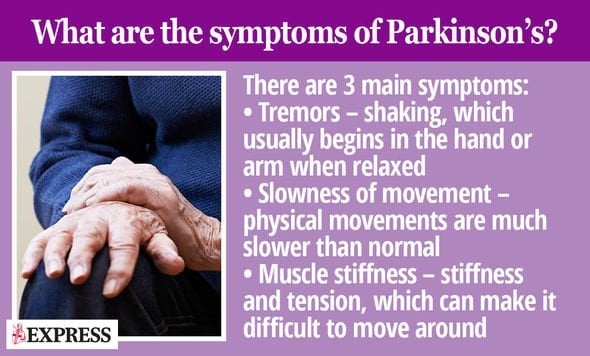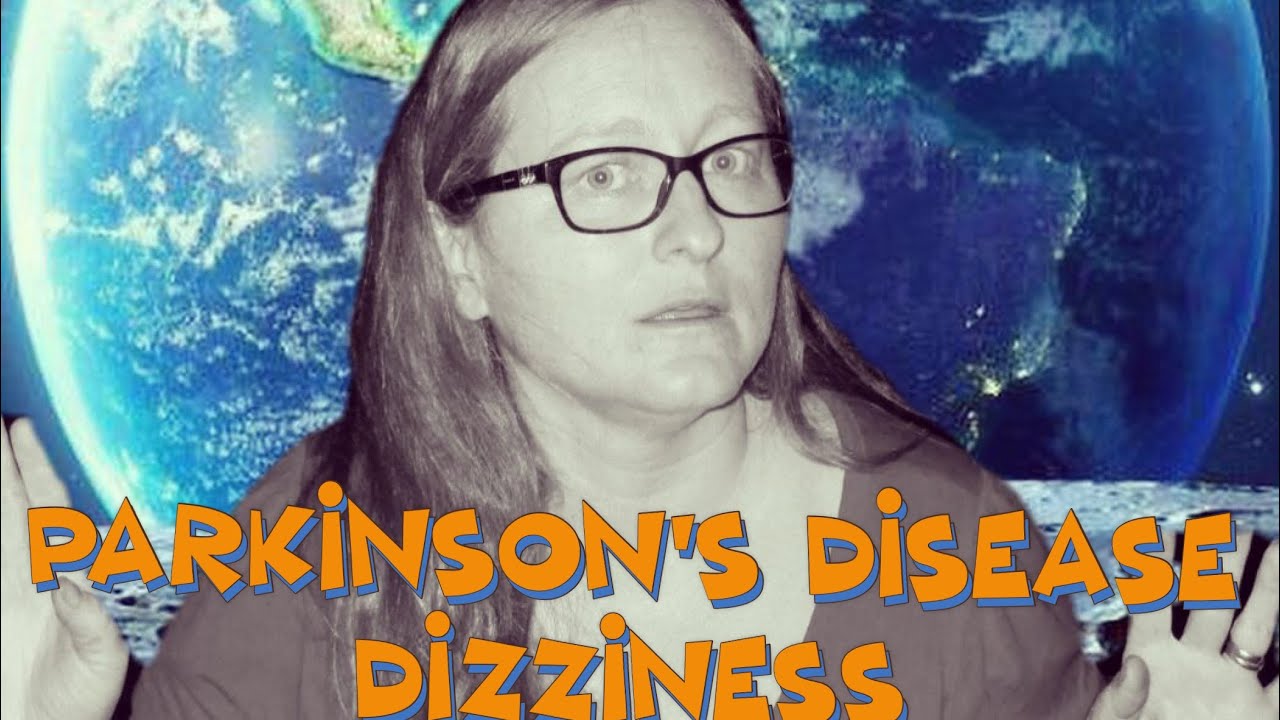Pd Community Blogread Blog
How can I prevent dizziness?
Tuesday September 04, 2012
Dizziness can have multiple causes in Parkinson’s. Most common, is low blood pressure, specifically a drop in blood pressure with standing a condition caused orthostatic hypotension. People of use the term dizziness to describe many different problems. The term dizziness is also used to describe a sense of imbalance when standing or walking, vertigo or sense of motion caused by inner ear or vestibular problems and a lack of mental clarity.
Low blood pressure can cause dizziness, ‘passing out’, fatigue, walking problems, and thinking problems.
Dizziness due to orthostatic hypotension can be treated. Most of these treatments work by increasing the volume of blood in your circulatory system, increasing blood pressure and optimizing heart function.
Monique L. Giroux, MD
What Is Parkinsons Disease
Parkinsons disease is a nervous system disease that affects your ability to control movement. The disease usually starts out slowly and worsens over time. If you have Parkinsons disease, you may shake, have muscle stiffness, and have trouble walking and maintaining your balance and coordination. As the disease worsens, you may have trouble talking, sleeping, have mental and memory problems, experience behavioral changes and have other symptoms.
Parkinson’s Disease Symptoms Everyone Should Know
Parkinsons disease symptoms can include tremor and trouble with movement, along with emotional and cognitive changes.
Parkinson’s disease symptoms can vary significantly from person to person. Some people may have range of motor symptoms, like tremor, stiffness, and slow movements. Others may also experience the non-motor symptoms of Parkinson’s disease, such as anxiety, cognitive changes, and loss of smell.
It has to do with a chemical messenger known as dopamine, which plays a role in the brain’s ability to control movement, coordination, and emotional responses. In Parkinson’s disease, the brain cells that produce dopamine either stop doing their job or they die out, resulting in both motor and non-motor symptoms. It’s not always easy to tell if someone you care about has Parkinson’s disease. Let’s take a closer look at the symptoms of the disease and signs that someone should make an appointment with their doctor.
Read Also: Parkinson’s Disease Education Handout
An Overlooked Condition That Reduces Blood Flow To The Brain
An often-overlooked condition that can lead to a reduced amount of blood flow to the brain is a misalignment of the C1 vertebra . When the cervical spine is misaligned, the vertebral arteries that facilitate blood flow to the brain may be hindered from doing their job properly. As a result, various conditions can occur including things like dizziness and even migraines. Even blood pressure problems have been linked to upper cervical misalignments.
How can this misalignment be corrected, and what effect may this have on dizziness?
What Are The Symptoms Of Parkinsons Disease

Symptoms of Parkinsons disease and the rate of decline vary widely from person to person. The most common symptoms include:
Other symptoms include:
- Speech/vocal changes: Speech may be quick, become slurred or be soft in tone. You may hesitate before speaking. The pitch of your voice may become unchanged .
- Handwriting changes: You handwriting may become smaller and more difficult to read.
- Depression and anxiety.
- Sleeping disturbances including disrupted sleep, acting out your dreams, and restless leg syndrome.
- Pain, lack of interest , fatigue, change in weight, vision changes.
- Low blood pressure.
Don’t Miss: Does Parkinson’s Disease Cause Seizures
Is Parkinsons Disease Inherited
Scientists have discovered gene mutations that are associated with Parkinsons disease.
There is some belief that some cases of early-onset Parkinsons disease disease starting before age 50 may be inherited. Scientists identified a gene mutation in people with Parkinsons disease whose brains contain Lewy bodies, which are clumps of the protein alpha-synuclein. Scientists are trying to understand the function of this protein and its relationship to genetic mutations that are sometimes seen in Parkinsons disease and in people with a type of dementia called Lewy body dementia.
Several other gene mutations have been found to play a role in Parkinsons disease. Mutations in these genes cause abnormal cell functioning, which affects the nerve cells ability to release dopamine and causes nerve cell death. Researchers are still trying to discover what causes these genes to mutate in order to understand how gene mutations influence the development of Parkinsons disease.
Scientists think that about 10% to 15% of persons with Parkinsons disease may have a genetic mutation that predisposes them to development of the disease. There are also environmental factors involved that are not fully understood.
What Medications Are Used To Treat Parkinsons Disease
Medications are the main treatment method for patients with Parkinsons disease. Your doctor will work closely with you to develop a treatment plan best suited for you based on the severity of your disease at the time of diagnosis, side effects of the drug class and success or failure of symptom control of the medications you try.
Medications combat Parkinsons disease by:
- Helping nerve cells in the brain make dopamine.
- Mimicking the effects of dopamine in the brain.
- Blocking an enzyme that breaks down dopamine in the brain.
- Reducing some specific symptoms of Parkinsons disease.
Levodopa: Levodopa is a main treatment for the slowness of movement, tremor, and stiffness symptoms of Parkinsons disease. Nerve cells use levodopa to make dopamine, which replenishes the low amount found in the brain of persons with Parkinsons disease. Levodopa is usually taken with carbidopa to allow more levodopa to reach the brain and to prevent or reduce the nausea and vomiting, low blood pressure and other side effects of levodopa. Sinemet® is available in an immediate release formula and a long-acting, controlled release formula. Rytary® is a newer version of levodopa/carbidopa that is a longer-acting capsule. The newest addition is Inbrija®, which is inhaled levodopa. It is used by people already taking regular carbidopa/levodopa for when they have off episodes .
You May Like: Tai Chi For Parkinson’s
What Are The Non
While Parkinson’s disease is often associated with movement changes, there are a variety of non-motor symptoms, as well. Non-motor symptoms refer to the many other changes to a person’s health and wellbeing that can happen from Parkinson’s.
These symptoms can sometimes have an even greater impact on a person’s life than tremor, rigidity, and slow movement, so it’s important to keep an eye out for them in someone with the disorder. Here are some of the non-motor symptoms of Parkinson’s disease to look out for:
What Are The Primary Motor Symptoms Of Parkinsons Disease
There are four primary motor symptoms of Parkinsons disease: tremor, rigidity, bradykinesia and postural instability . Observing two or more of these symptoms is the main way that physicians diagnose Parkinsons.
It is important to know that not all of these symptoms must be present for a diagnosis of Parkinsons disease to be considered. In fact, younger people may only notice one or two of these motor symptoms, especially in the early stages of the disease. Not everyone with Parkinsons disease has a tremor, nor is a tremor proof of Parkinsons. If you suspect Parkinsons, see a neurologist or movement disorders specialist.
Tremors
Rigidity
Bradykinesia
Postural Instability
Walking or Gait Difficulties
Dystonia
Vocal Symptoms
You May Like: How Hereditary Is Parkinson’s Disease
Parkinsons Disease: Dr Chris On How To Spot Early Signs
We use your sign-up to provide content in ways you’ve consented to and to improve our understanding of you. This may include adverts from us and 3rd parties based on our understanding. You can unsubscribe at any time. More info
Parkinsons disease is a condition that causes the brain to become progressively more damaged over time, said the NHS. You could be at risk of the neurodegenerative condition if you find that you’re unusually dizzy, without any obvious reason, it’s been revealed.
What Causes Parkinsons Disease
Parkinsons disease occurs when nerve cells in an area of the brain called the substantia nigra become impaired or die. These cells normally produce dopamine, a chemical that helps the cells of the brain communicate . When these nerve cells become impaired or die, they produce less dopamine. Dopamine is especially important for the operation of another area of the brain called the basal ganglia. This area of the brain is responsible for organizing the brains commands for body movement. The loss of dopamine causes the movement symptoms seen in people with Parkinsons disease.
People with Parkinsons disease also lose another neurotransmitter called norepinephrine. This chemical is needed for proper functioning of the sympathetic nervous system. This system controls some of the bodys autonomic functions such as digestion, heart rate, blood pressure and breathing. Loss of norepinephrine causes some of the non-movement-related symptoms of Parkinsons disease.
Scientists arent sure what causes the neurons that produce these neurotransmitter chemicals to die.
Don’t Miss: Green Tea For Parkinson’s
Falls And Parkinson’s Disease
A loss of balance often resulting in falling affects many with Parkinsons. This is due in part to general motor dysfunction caused by the disorder. Falling can depend on each persons symptoms and how they respond to medication. This should be monitored for any pattern noted at the time of these changes or fluctuations.5 Syncope is one of the most commonly overlooked causes of dizziness in people with Parkinsons.2
How Do I Prevent Falls From Common Hazards

- Floors: Remove all loose wires, cords, and throw rugs. Minimize clutter. Make sure rugs are anchored and smooth. Keep furniture in its usual place.
- Bathroom: Install grab bars and non-skid tape in the tub or shower. Use non-skid bath mats on the floor or install wall-to-wall carpeting.
- Lighting: Make sure halls, stairways, and entrances are well-lit. Install a night light in your bathroom or hallway and staircase. Turn lights on if you get up in the middle of the night. Make sure lamps or light switches are within reach of the bed if you have to get up during the night.
- Kitchen: Install non-skid rubber mats near the sink and stove. Clean spills immediately.
- Stairs: Make sure treads, rails, and rugs are secure. Install a rail on both sides of the stairs. If stairs are a threat, it might be helpful to arrange most of your activities on the lower level to reduce the number of times you must climb the stairs.
- Entrances and doorways: Install metal handles on the walls adjacent to the doorknobs of all doors to make it more secure as you travel through the doorway.
Also Check: What Age Can Parkinson’s Disease Start
What Are The Surgical Treatments For Parkinsons Disease
Most patients with Parkinsons disease can maintain a good quality of life with medications. However, as the disease worsens, medications may no longer be effective in some patients. In these patients, the effectiveness of medications becomes unpredictable reducing symptoms during on periods and no longer controlling symptoms during off periods, which usually occur when the medication is wearing off and just before the next dose is to be taken. Sometimes these variations can be managed with changes in medications. However, sometimes they cant. Based on the type and severity of your symptoms, the failure of adjustments in your medications, the decline in your quality of life and your overall health, your doctor may discuss some of the available surgical options.
Thanks For Signing Up
We are proud to have you as a part of our community. To ensure you receive the latest Parkinsons news, research updates and more, please check your email for a message from us. If you do not see our email, it may be in your spam folder. Just mark as not spam and you should receive our emails as expected.
Don’t Miss: If My Parent Has Parkinson’s Will I Get It
Equipment And Walking Aids
You might find that equipment can help you to walk, such as a walking stick or a rollator .
Before you start using a walking aid, it’s very important to get advice from a physiotherapist. Some walking aids aren’t recommended for people with Parkinsons as they can affect your walking pattern and make you more likely to fall. But, the correct walking aid can increase your confidence and help you to lift your feet better.
Late Complications Of Parkinson’s Disease
Patients with PD respond to levodopa almost immediately. However, 20 to 50% of patients will develop motor fluctuations or dyskinesias within 5 years of starting levodopa therapy. Response fluctuations consist of a mixture of “wearing-off” phenomenon, “on” dyskinesias , “Diphasic dyskinesias” , and “off” dystonia .
Wearing off can be managed by decreasing the dosing interval, switching to a longer acting product, or by adding or increasing the dose of dopamine agonist. On-off effects are harder to manage. The addition of a direct dopamine agonist or switching to a slow acting dopamine preparation may reduce the frequency of dyskinesias and on/off events. Pramipexole, as initial therapy compared to levodopa, reduces the risk of developing complications by about 55%, but it is not as effective as Levodopa and has some adverse affects . COMT inhibitors may smooth smooth out the peaks/troughs of dopamine and reduce fluctuation.
Psychiatric adverse effects include psychosis, confusion, agitation, hallucinations and delusions. These can be treated by decreasing dopamine medication, reducing or discontinuing anticholinergics, amantadine or selegiline, or by using clozipine at doses of 6.25 to 50 mg/d .
You May Like: Parkinson’s End Of Life Signs
Common Causes Of Dizziness And Vertigo In Parkinsons And How To Treat Them:
In people with early Parkinsons disease , the dizziness has in many cases linked to a lower Montreal Cognitive Assessment score raising the possibility that dizziness may be a non-movement symptom associated with cognitive decline .
Dizziness or vertigo can be tied to many causes and is not unique to Parkinsons. Symptoms can be caused by medications, low blood pressure, anxiety, cold, flu, dehydration, heart conditions and more. Tell your doctor immediately if you regularly experience dizziness or vertigo.
Page reviewed by Dr. Michael S. Okun, Parkinsons Foundation Medical Director, Professor and Chair, Department of Neurology, Executive Director of the Fixel Institute for Neurological Diseases a Parkinson’s Foundation Center of Excellence.
Dizziness And Vertigo In Parkinsons
Dizziness and vertigo are not unique to Parkinsons disease .3 There can be multiple causes and determining an effective treatment depends on good reporting of the symptoms and the ability to identify a cause. Additionally, symptoms may be less notable in the early stages of Parkinsons.3 As with most aspects of Parkinsons, the experience of symptoms is unique you may not ever experience these.
You May Like: Things For Parkinson Patients To Do
How Is Parkinsons Disease Diagnosed
Diagnosing Parkinsons disease is sometimes difficult, since early symptoms can mimic other disorders and there are no specific blood or other laboratory tests to diagnose the disease. Imaging tests, such as CT or MRI scans, may be used to rule out other disorders that cause similar symptoms.
To diagnose Parkinsons disease, you will be asked about your medical history and family history of neurologic disorders as well as your current symptoms, medications and possible exposure to toxins. Your doctor will look for signs of tremor and muscle rigidity, watch you walk, check your posture and coordination and look for slowness of movement.
If you think you may have Parkinsons disease, you should probably see a neurologist, preferably a movement disorders-trained neurologist. The treatment decisions made early in the illness can affect the long-term success of the treatment.
The Dizziness Connected To Parkinsons Linked To Cerebral Blood Flow

Dizziness is a common symptom of many conditions. Perhaps your doctor was able to identify the underlying cause of your dizziness. If so, youre actually in the minority. In most cases of dizziness, the cause is a mystery. As a result, a patient may remain to wonder if the symptom will return.
In other cases, the underlying cause of dizziness is identified, but there is no cure for the condition. One condition where this is the case is Parkinsons disease.
Don’t Miss: Asbestos And Parkinson’s Disease
The Early Signs Of Parkinsons Disease
Health Check Certified By: Dr. Gerald Morris
Parkinsons diseasea chronic and progressive brain disorder that causes loss of muscle controlaffects nearly one million people in the U.S. This disease results in the death and malfunction of nerve cells in the brain, many of which produce dopamine, a chemical responsible for controlling movement and coordination.
While symptoms such as tremors, slowed movement and speech problems are among the most common symptoms of Parkinsons, they tend to present themselves only once the disease has progressed. To detect Parkinsons disease in the early stages of development, the following are 12 signs to keep an eye out for.
Could Noh Be The Cause
Symptoms of nOH, including dizziness, lightheadedness, muscle weakness, and feeling faint after standing, can occur in a person who is at any stage of Parkinsons disease. People often think these symptoms are part of their Parkinsons disease and are something they must learn to live with, but these symptoms may be a sign of nOHa separate condition that can also be managed.
Also Check: Parkinson’s Disease Family Support
How Is Parkinson’s Disease Diagnosed
A person doesn’t need to have all the signs and symptoms of Parkinson’s disease to be diagnosed with it.
“In general, people have a combination of the motor symptoms and the non-motor symptoms,” says Dr. Nwabuobi. “Some people have more non-motor symptoms than motor and vice versa, but in order to have a diagnosis of Parkinson’s, you definitely need the motor symptoms. We’re looking for specific things , including a rest tremor, bradykinesia, rigidity, and poor balance.”
According to the Parkinson’s Foundation, a person needs to have two of the four main motor symptoms of Parkinson’s over a period of time to be diagnosed with the disease.